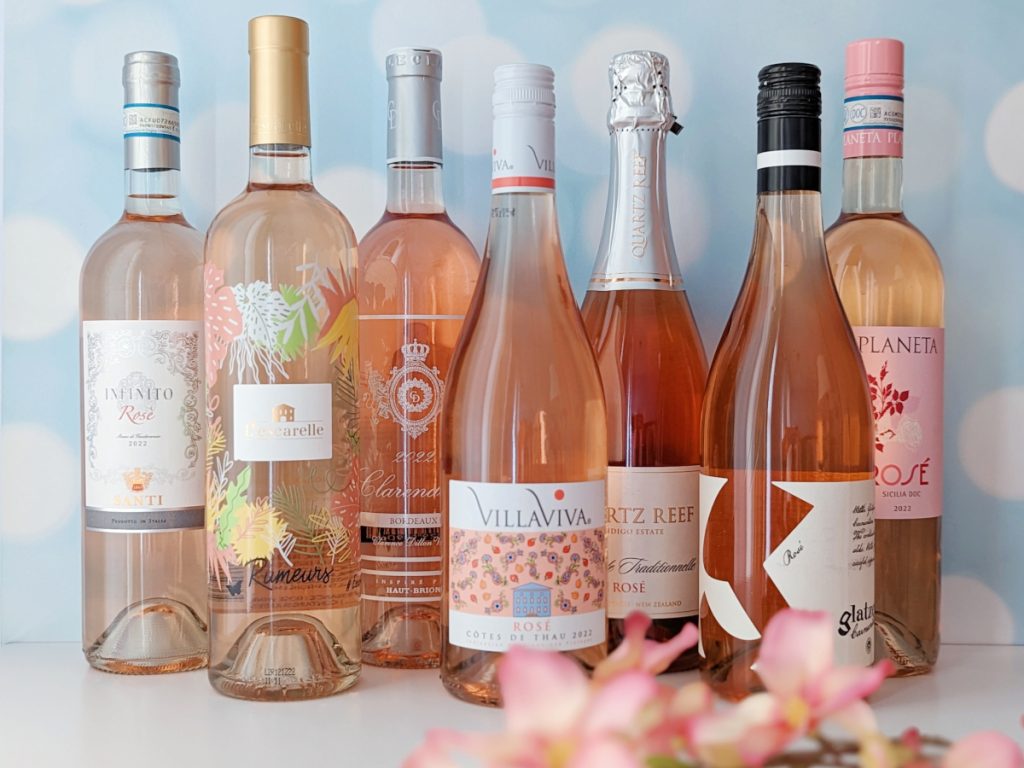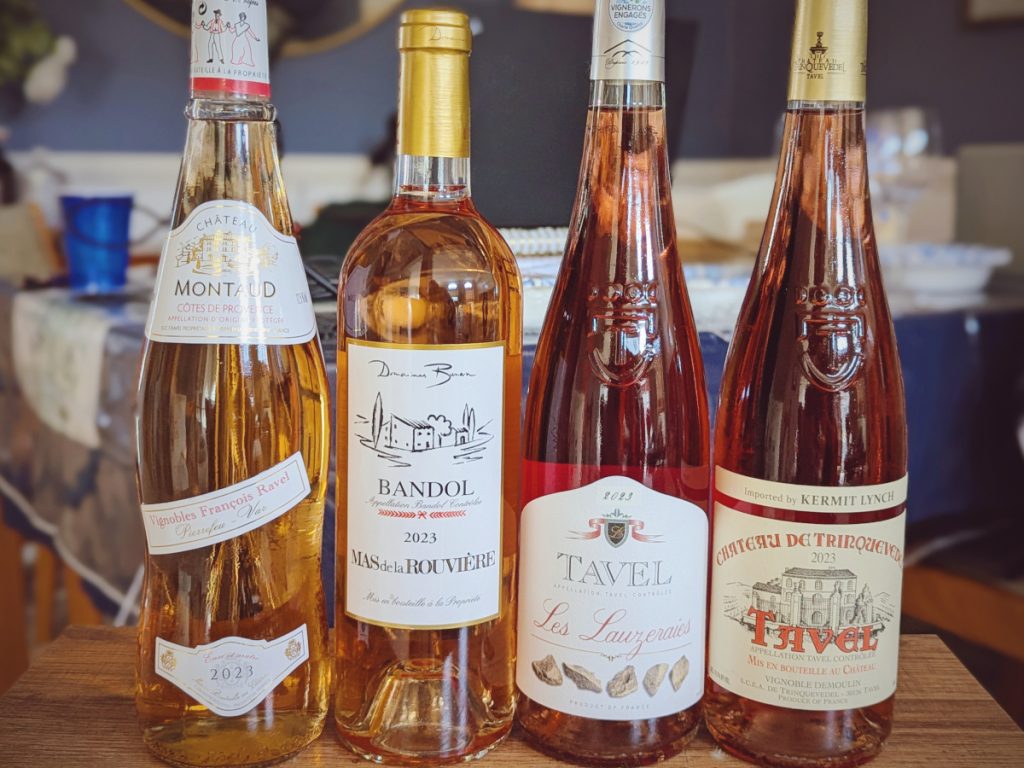
Photo by: Denise M. Gardner
We’ve hit that time of year again in which rosé wines are about to flood the retail market. While it’s still on you – the Wine Lover – to look up which are dry and which are sweet, I have some tips that will help you select your next bottle of rosé with ease!
Two Primary Rosé Styles
The best part about rosé wine is that it’s pretty straightforward in style: the wines will typically “taste like wine,” provide neutral but nuanced aromas and flavors. Despite the neutrality, rosé wines tend to carry two primary tastes: refreshingly sour (acidic) with citrus-based aromas/flavors or delightfully refreshing, but easy-to-drink with a more noticeable red berry-based aroma/flavor. I’ve coined these two styles of wine as “Rosés that Refresh” (more sour with a strong citrus flavor) and “Rosés that Delight” (easier-to-drink with red berry flavors).
These two categories are derived from two staple rosé regions in France: Provence and Tavel.
Provencal Rosé (Rosés That Refresh)
Rosé wines produced in Provence certainly popularized the refreshing, acidic (sour), light-colored rosé wine that many people have come to love. Set in the southern, coastal edge of France, Provence produces rosé wines that have an edgy acidity. They tend to lean quite crisp! Provencal rosés are the equivalent of sipping cold lemonade on a hot summer day. There is nothing like a chilled glass of Provencal rosé wine as the days start to get hotter.
Virginia, my cohost on “Voices of the Vine” recently provided (Episode 15) a short dive into rosé history, and Provencal rosé wines are right in the center of it. The good news about Provencal rosé wines is that this is also the most emulated style of rosé on the wine market. It’s a rather safe bet that if you find a rosé, you are most likely going to find this style of wine. And, of course, if you are looking for some suggestions, check out a few from the list I provided in a previous Sip & Swirl, “The 2023 Rosé Roundup”.

Photo by: Denise M. Gardner
Tavel Rosé (Rosés That Delight)
In contrast, the Tavel region of France captures the delightful style of rosé wine that is a little less well-known. These styles of rosé are deeply colored, do not have quite as much sourness, and often feature a nuanced red berry character that differentiates them from their Provencal cousins. Even though these wines have a riper red fruit flavor, they are still primarily dry, lacking sweetness. Nonetheless, these are easy-sipping wines, something you can certainly enjoy pool-side.
In truth, White Zinfandel, produced primarily in California (U.S.) belongs in this group of rosé wines. While naturally berry-flavored, White Zinfandel tends to come sweet, which is not necessarily the case for Tavel rosé wines. Many, many rosés are dry (lack sweetness), so if you are looking for something sweet, make sure you read those little wine cards that describe the wine, turn to that back label, or check out the wine online. Of course, if you need some suggestions, refer to the previous Sip & Swirl, “The 2023 Rosé Roundup”.
More on Rosé
In Episode 15 of “Voices of the Vine,” Virginia and I review a lot of information about rosé wines available on the market today. Many now come in screw-capped bottles, making them easily accessible for American wine consumers. We also reviewed a few regions beyond the standard Provence vs. Tavel (though, everything seems to stem from these two classic rosé styles). Virginia made the fair point that wherever you find red wine, you will also find rosé. Rosé is a natural fit for winemaking regions with strong red wine production.
If you would like to explore these two regions in more depth, our upcoming Wine Tasting Shorts are going to feature a rosé wine from Provence and a rosé wine from Tavel. This link to Episode 15 provides the wine brands we’ll be tasting if you’d like to follow along with us. Each Wine Tasting Short also features some background on the producer and food-pairing suggestions that we think may be unique for that wine.
Two Additional Rosé Wine Styles
If you aren’t a fan of the traditional rosé wine styles, also consider “Rosés that Surprise” or “Rosés that Sparkle”.
“Rosés that Surprise” tend to be blends of various rosé wine grape varieties with an added percentage of aromatic white wine that goes into the blend. Some examples of aromatic white wine grape varieties that may get included in the blend are Viognier, Moscato/Muscat, Riesling, Gewurztraminer, Vidal Blanc, Albarino, and even Chardonnay. Though, there are plenty of other aromatic white wine grape varieties that could contribute to the rosé blend.
The reason I term these “Rosés that Surprise” is because the aroma/flavor characteristics of the wines differentiate from the traditional two rosé wine styles, described above. Often, these rosé wines will carry a tropical fruit note or floral note to them that is not as easily obtainable from the two traditional rosé wine styles.
If you’d like some suggestions on rosés that Surprise” or “rosés that Sparkle,” you can find out some of my past tastings in the past Sip & Swirl editions, 2023 Rosé Roundup or Creating Rosé Wines.

